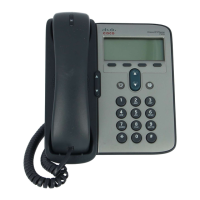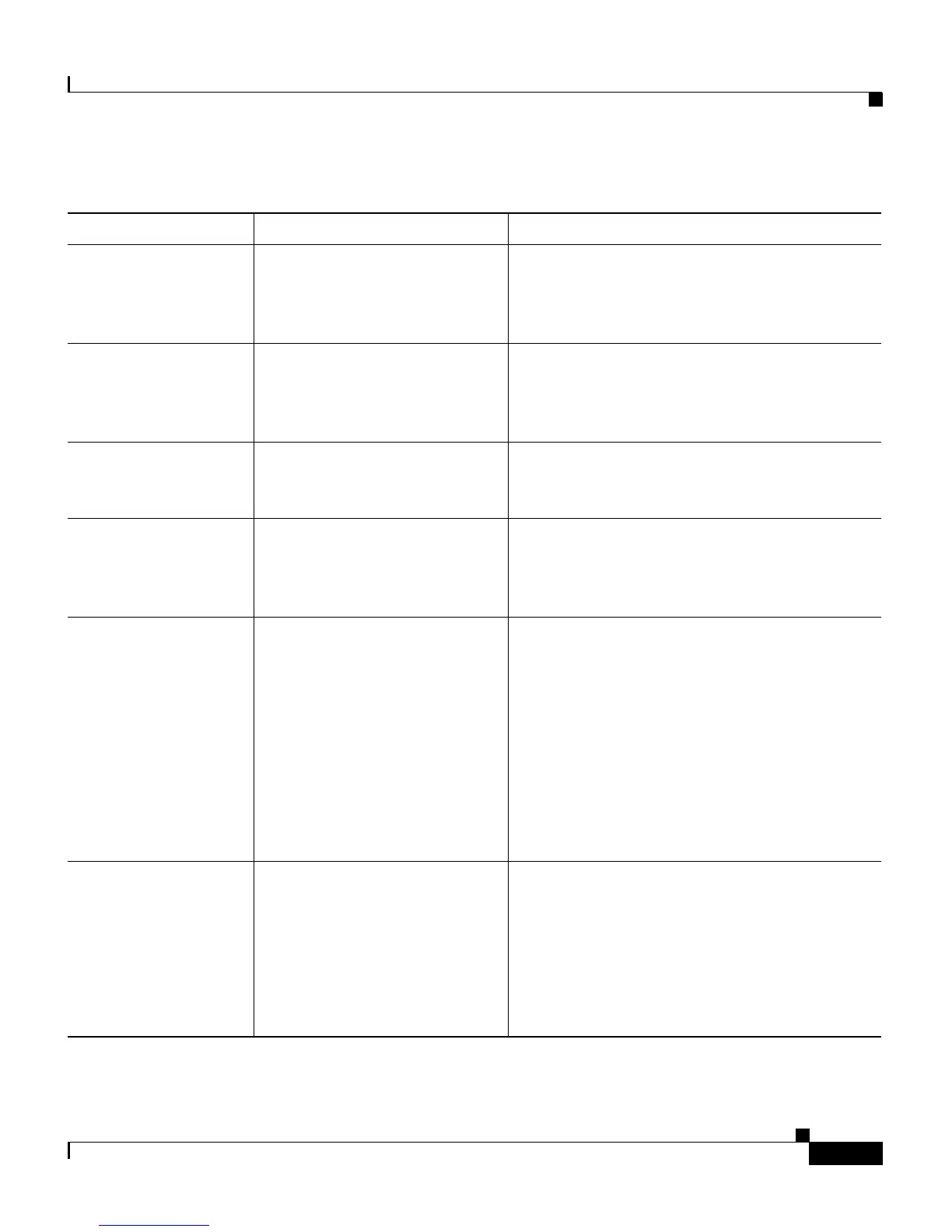7-11
Cisco Unified IP Phone 7906G and 7911G Administration Guide for Cisco Unified CallManager 5.1
OL-11515-01
Chapter 7 Viewing Model Information, Status, and Statistics on the Cisco Unified IP Phone
Status Menu
IP address released The phone has been
configured to release its IP
address.
The phone remains idle until it is power
cycled or you reset the DHCP address. See the
“Network Configuration Menu” section on
page 4-7 section for details.
Load Auth Failed The phone could not load a
configuration file.
The configuration file that the phone received
from the server identified in this message is
corrupt. Make sure that a good version of the
configuration file exists on that server.
Load Auth Failed A signed phone load file has
been modified or renamed.
Make sure that the phone load file that the
phone is downloading has not been altered or
renamed.
Load ID incorrect Load ID of the software file is
of the wrong type.
Check the load ID assigned to the phone (from
Cisco
Unified CallManager, choose Device >
Phone). Verify that the load ID is entered
correctly.
Load rejected HC The application that was
downloaded is not compatible
with the phone hardware.
Occurs if you were attempting to install a
version of software on this phone that did not
support hardware changes on this newer
phone.
Check the load ID assigned to the phone (from
Cisco
Unified CallManager, choose Device >
Phone). Re-enter the load displayed on the
phone. See the
“Firmware Versions Screen”
section on page 7-16 to verify the phone
setting.
Load Server is invalid Indicates an invalid TFTP
server IP
address or name in
the Load Server option.
The Load Server setting is not valid. The Load
Server specifies a TFTP server IP address or
name from which the phone firmware can be
retrieved for upgrades on the phones.
Check the Load Server entry (from
Cisco
Unified CallManager Administration
choose Device > Phone).
Table 7-2 Status Messages on the Cisco Unified IP Phone 7906G and 7911G (continued)
Message Description Possible Explanation and Action

